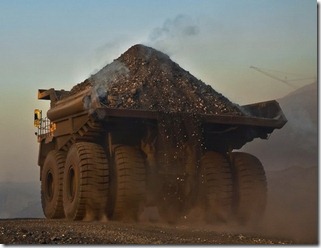The mining boom has seen an influx of people move to WA and Perth. What was once a big country town is now a city in its own right. Many families have based themselves in Perth, and fly in and fly out to the mines. It offers an attractive salary and many workers in the mines in WA are paid well above minimum wage. Some miners on the remote gas and oil rigs can earn up to $200,000 a year. Administrators and drivers can earn $100,000. The draw of high salaries has attracted many people to WA, but is the market now saturated?
Mining boom and Jobs
There have been many newspapers speculating that the mining boom has reached its peak and will be over in two years. BHP and Xstrata PLC, two of Australia’s biggest coal exporters, cut 900 jobs in September. BHP closed its Norwich Park mine this year which saw 1,400 employees affected.
Others argue that the demand for iron ore and coal will continue. China is one of Australia’s biggest imports and they are still developing. Many people do not have cars and washing machines and they will still be in need of Australia’s raw materials. To obtain these minerals there is a constant need of equipment such as tools, diesel generators and trucks for the mines to operate.
Those who do not work in the mines are still affected by the boom. The higher wages from the mines has led to increased prices for basic goods. Household bills have increased the cost of rent and for those looking to get on the property ladder, it is nearly impossible with a normal salary. Those living in Port Headland are having to move out as they can no longer afford buy when the median house price has nearly doubled in the past four years. Closer to Perth, house prices are also very expensive. For those who want to live near Cottesloe Beach for example, it will be hard to find a house for less than $500,000. Coming up for a deposit for this type of house means many of the young local residents have to move away from the community have grew up with to an area with more affordable housing.
Australia’s economy depends on mining, one of the reasons why it has managed to ride through the Global Financial Crisis (GFC) which has affected Europe and the United States. Australia is the largest exporter of iron ore and second largest of thermal coal in the world. Although mining has experienced a boom in recent years, it is unrealistic to assume it can continue to grow at such a fast rate, although it will still play a big part of Australia’s economy. While this sector is performing well, the government should be investing in other areas to ensure there is plenty to keep the economy afloat, should the mining industry flatten out.
Article posted by guest author “Robin Sharman”






